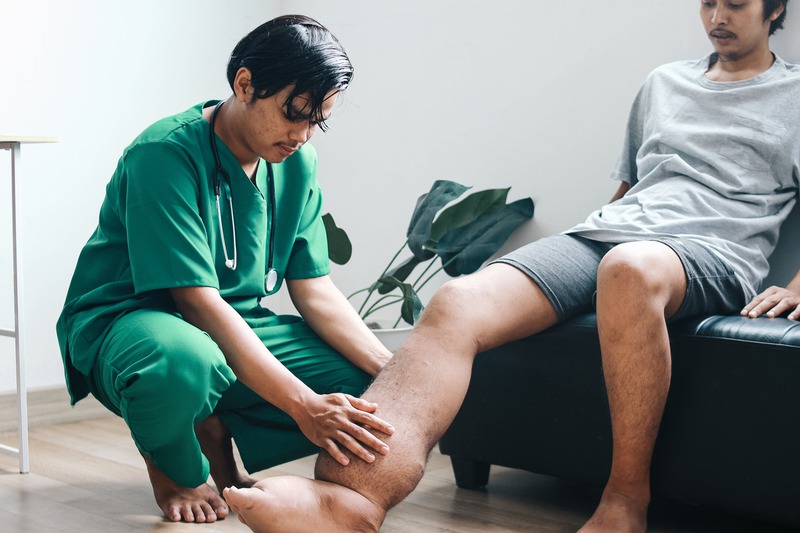
What Types of Physical Therapy Are Available for Recovery?
October 14, 2024Physical therapy plays a key role in the recovery process from injuries, surgeries, or chronic health issues. Navigating through the array of available therapies, it’s essential to identify the type that best matches individual recovery needs. Whether improving mobility or managing pain, physical therapy offers a range of specialized methods designed to support healing. This article explores these options, providing insight into how each therapy type can address specific recovery goals and concerns.
Different Types of Physical Therapy for Recovery
The landscape of physical therapy is diverse, with several specialized approaches tailored to meet various health issues. Recognizing these different types aids in selecting the most appropriate treatment for particular recovery requirements.
Orthopedic Physical Therapy
Orthopedic physical therapy is commonly sought by individuals recovering from musculoskeletal injuries. This type of therapy is perfect for fractures, sprains, or surgical rehabilitation. It focuses on enhancing movement and strength through exercises, joint mobilization, and manual therapy. Restoring function and reducing pain is central to this approach, often involving a collaborative effort with medical professionals to optimize recovery.
Neurological Physical Therapy
For those with neurological disorders such as stroke, multiple sclerosis, or Parkinson’s disease, neurological physical therapy offers targeted rehabilitation. It emphasizes the improvement of balance, posture, and coordination, employing exercises that stimulate the nervous system to restore motor skills. This therapy also often integrates assistive devices to facilitate daily living activities.
Cardiovascular and Pulmonary Therapy
People managing heart or lung conditions benefit from cardiovascular and pulmonary therapy, designed to boost stamina and respiratory health. This type of therapy aids recovery from heart attacks, chronic respiratory diseases, or post-cardiac surgery through breathing, cardiovascular, and energy conservation exercises. It aims to enhance overall aerobic capacity and well-being.
Pediatric Physical Therapy
Younger patients, from infants to teenagers, find support in pediatric physical therapy. Catering to developmental delays, cerebral palsy, or congenital disorders, this therapy works to improve gross and fine motor skills, coordination, and balance. Playful and engaging activities help children achieve their developmental milestones while addressing physical challenges.
Geriatric Physical Therapy
Addressing age-related physical issues, geriatric therapy benefits those experiencing conditions such as arthritis, osteoporosis, or balance disorders. Focusing on improving mobility and reducing pain, this therapy promotes independence in older adults. Through tailored strength exercises, balance activities, and guidance on assistive devices, seniors can maintain active and fulfilling lifestyles.
Pain Management in Therapy
Managing pain effectively is a cornerstone of physical therapy. Through therapeutic exercises, manual treatments, and modalities such as ultrasound or electrical stimulation, therapy aims to reduce discomfort. These techniques target pain sources and enhance movement, easing the recovery process and improving quality of life.
Centers offering physical therapy in Boiling Springs provide customized approaches across these therapy types, ensuring accessible and personalized treatment options to support optimal recovery outcomes.
Benefits of Physical Therapy
-
Enhancing strength and flexibility through structured exercises.
-
Providing education on injury prevention and health maintenance.
-
Offering non-invasive treatment alternatives to surgery or medication.
-
Creating personalized plans that address individual patient needs.
-
Improving overall functional mobility and quality of life.
Through a collaborative relationship between patients and therapists, recovery is not only about exercises but about gaining tools and knowledge for lifelong physical health management. This patient-centered approach ensures that therapy addresses specific challenges and goals.
Selecting a Therapist
Choosing the right therapist requires considering various factors to ensure compatibility with recovery goals:
-
Therapist’s specialization and experience in treating specific conditions.
-
Convenience and proximity of the clinic location.
-
Feedback and reviews from previous patients about their experiences.
-
Flexible scheduling that fits into personal routines.
-
Insurance coverage and financial considerations.
Finding a qualified therapist assures quality care and support throughout the recovery process. Evaluating these factors facilitates a successful and satisfying treatment experience.
Integrating Technology in Therapy
Modern technology significantly impacts the delivery and effectiveness of physical therapy. Incorporating tools like wearable sensors or mobile apps enhances monitoring and progression tracking. Virtual reality applications create immersive rehabilitation experiences, simulating real-life scenarios for practice. Online teletherapy platforms provide accessible treatment options when in-person visits are challenging.
Facilities like Elite Integrated Therapy Centers leverage advanced equipment and technology to deliver state-of-the-art care. This approach is integral to devising efficient and effective treatment plans that are aligned with current advancements in therapy.
Session Expectations
Being informed about what to expect in therapy sessions can ease any concerns or anxieties. Initial assessments involve a comprehensive evaluation of the patient’s condition, medical history, and therapy goals. This informs a tailored treatment plan crafted by the therapist. Subsequent sessions may include a mix of guided exercises, manual therapy interventions, and discussions for ongoing adjustments as progress is made.
Not only do therapy centers provide structured sessions, but many also offer resources and tools to facilitate at-home improvements, ensuring a holistic support system is in place throughout the recovery journey. Locational information and accessibility are often mapped, like here, providing straightforward access to facilities and services.
Closing Remarks
Ultimately, understanding the various types of physical therapy available empowers individuals to make informed decisions that support their recovery goals. With numerous specialized approaches tailored to address specific conditions and needs, physical therapy paves the way for enhanced mobility, reduced pain, and improved quality of life. Whether seeking orthopedic or neurological therapy, pain management solutions, or pediatric care, physical therapy offers a path toward achieving optimal health and wellness.




